Cardiff University (Welsh School of Architecture)
Tutors: Michael Corr / Tom Keeley
Semester 2, 2017-2018
Tutors: Michael Corr / Tom Keeley
Semester 2, 2017-2018
The Customs Post is a series of structures proposed for various purposes; events, education, social and work with the main purpose of the integration of customs in mind. Specifically, the scheme is focused on bringing the customs of the settled communities of both Lifford and Strabane together with those of travelling communities in order to overcome acts of sedentarism.
The travelling community is the second largest ethnic minority group in Northern Ireland and the republic. They have a wealth of culture and traditions such as tarmacking, tinsmithing, story-telling and singing. Unfortunately, due to misconceptions towards their lifestyle, the travelling community population is reducing – along with their culture and traditions. Sedentarism is the rejection of travellers by the settled community and this has caused a negative domino effect in the aspect of education, healthcare and accommodation; children are discriminated in local schools, life expectancy of travellers is 20% lower than the national average and suicide rates are six times higher – accounting for over 10% of traveller deaths.
Perspective section through scheme
This project aims to bring the customs of the settled community and travelling communities together in order to regain interactions and integrate their respective customs. The site currently receives plenty footfall and customs but this scheme strives to bring communities, and hence the customs, together.
To put the entire scheme into context; as a minimum, there are 250,000 people passing this site per week; 120,500 of which are vehicles. If we take half of these vehicles are not residents and we take – as a minimum – just half a percent of that half are travellers, if we then take a quarter of that, that’s 300 travellers passing per month and even if only a fifth of them stop, that is 60 travellers on average stopping and possibly staying (minimally) between 1 – 7 days.
If even just a quarter that stop interact with the settled community and just talk, that makes 780 stories or interactions a year. That, combined with the exponential factor of word of mouth, means that within years, the sharing of customs between the communities becomes a spreading sustainable trend.
Site axonometric and programme
The entire scheme is inspired by the idea of a caravanserai – not only via the form of the arches but through research as a point where travellers and passers can rest and recover.
Pedestrian movement is a key part of the strategy and so the scheme has widened the road like to create a sort of customs post checkpoint. In a similar way to manoeuvring from a car in a car park to a store entrance, there is more than one route to take which means there is statistically more opportunity for integration and exploration.
Exploded axonometric of pavilion
Technical section through nursery and meeting rooms
The final site model was set on the conceptual patterned base representing the connection between the north and the south as well as the continuous flow of the settled and travelling communities. I made models testing different forms as well as the concept of ‘settling’ through lighter-weight, temporary structures to heavier, more permanent structures.
Site model with scheme proposition

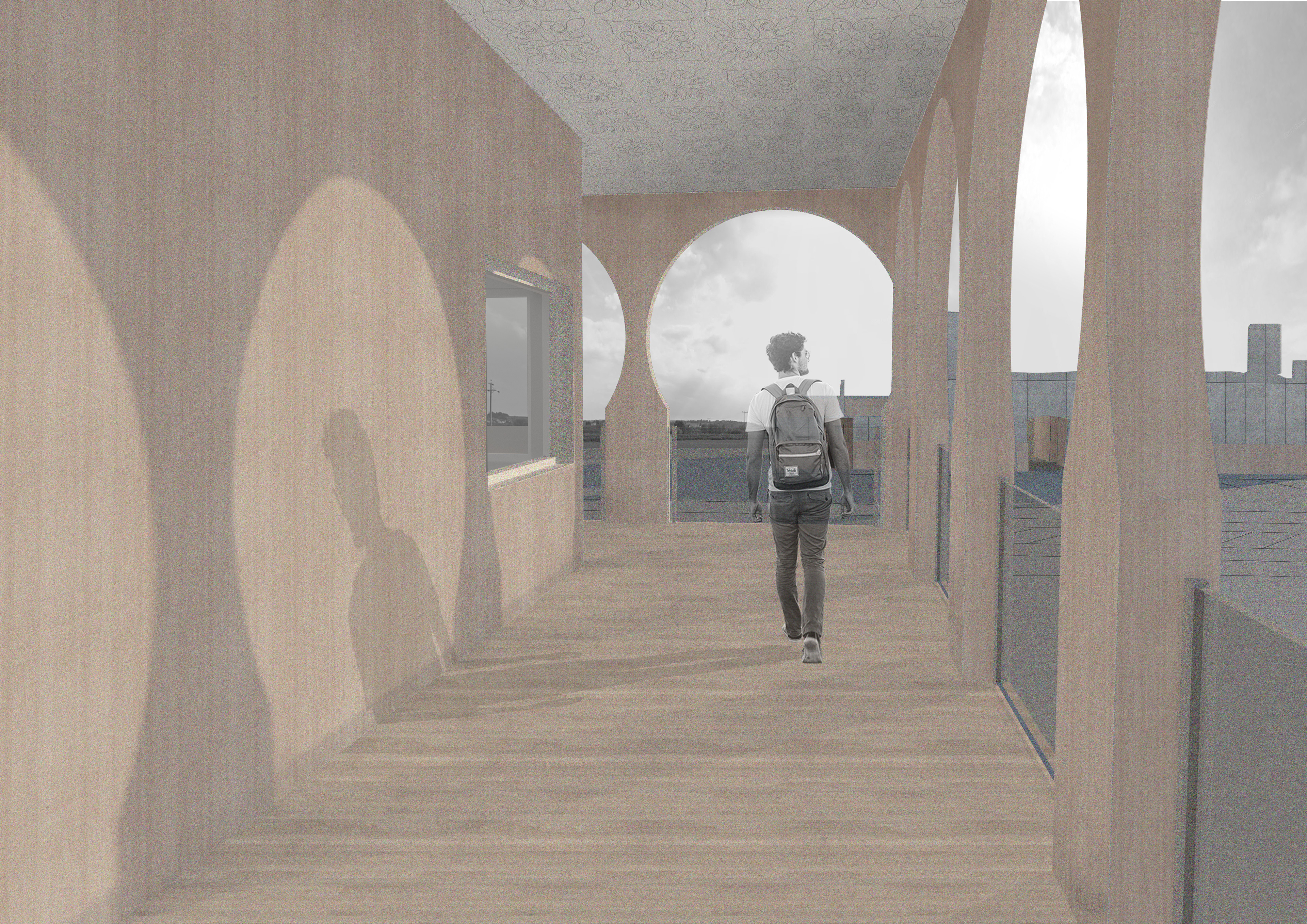


Scheme renders
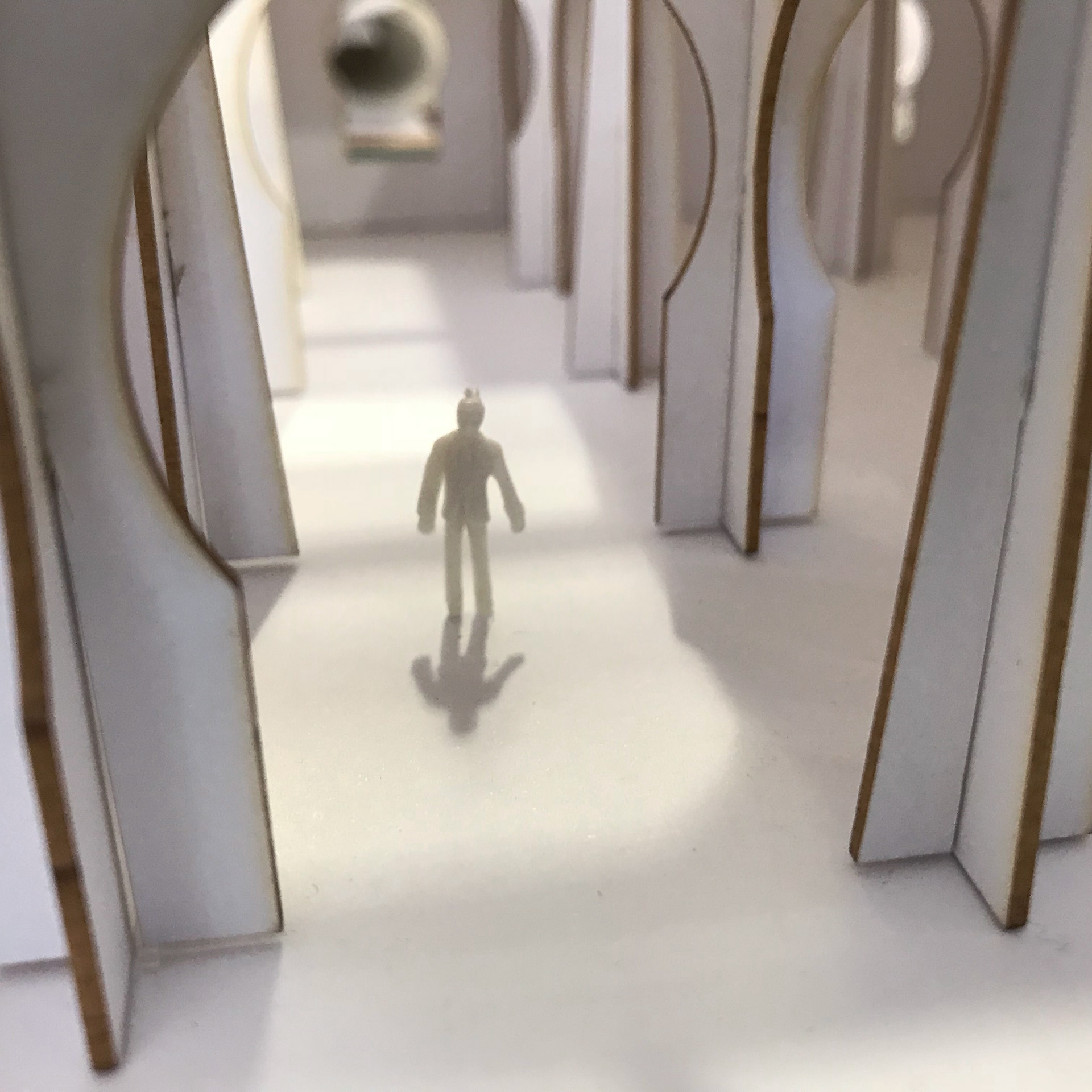
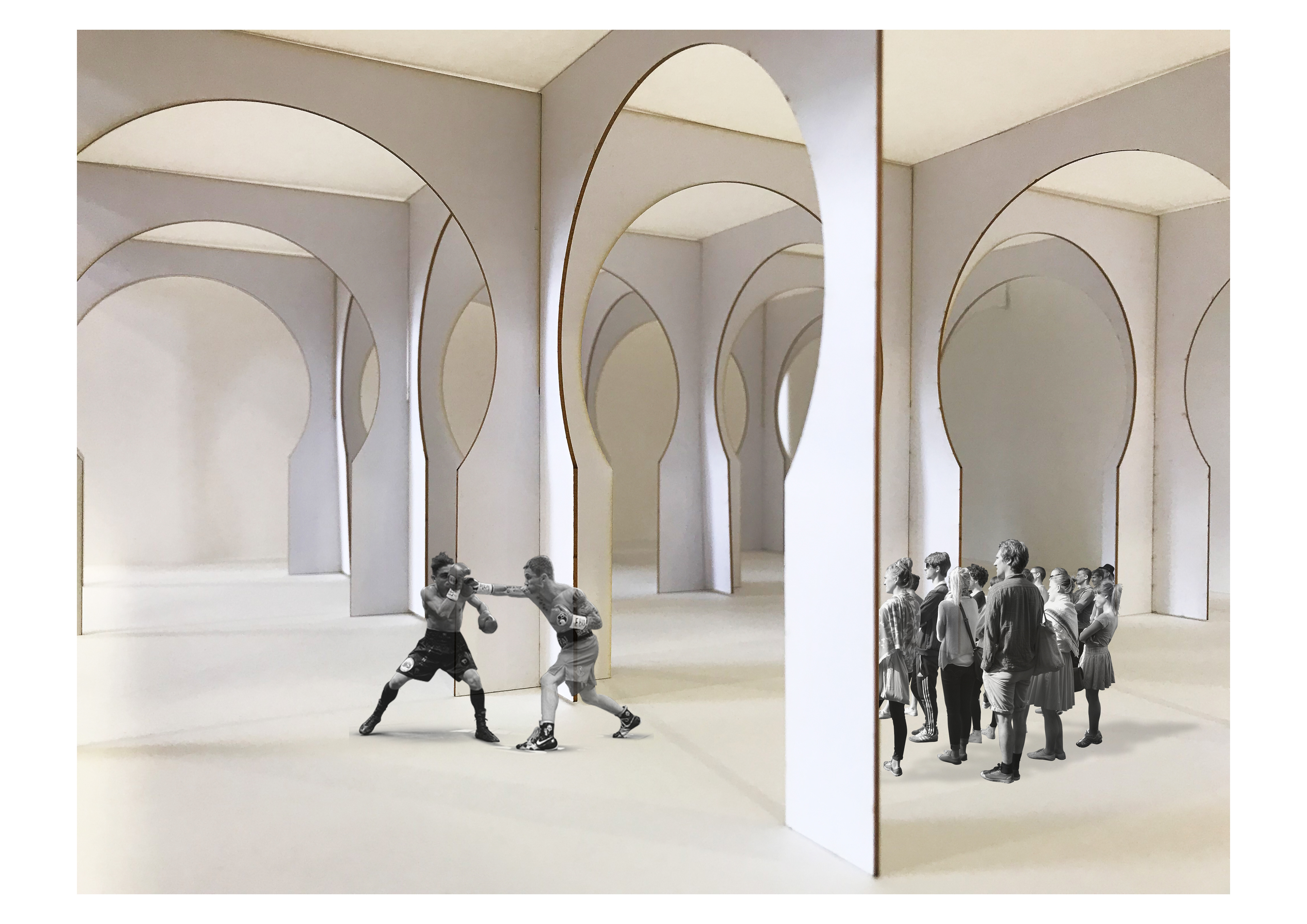
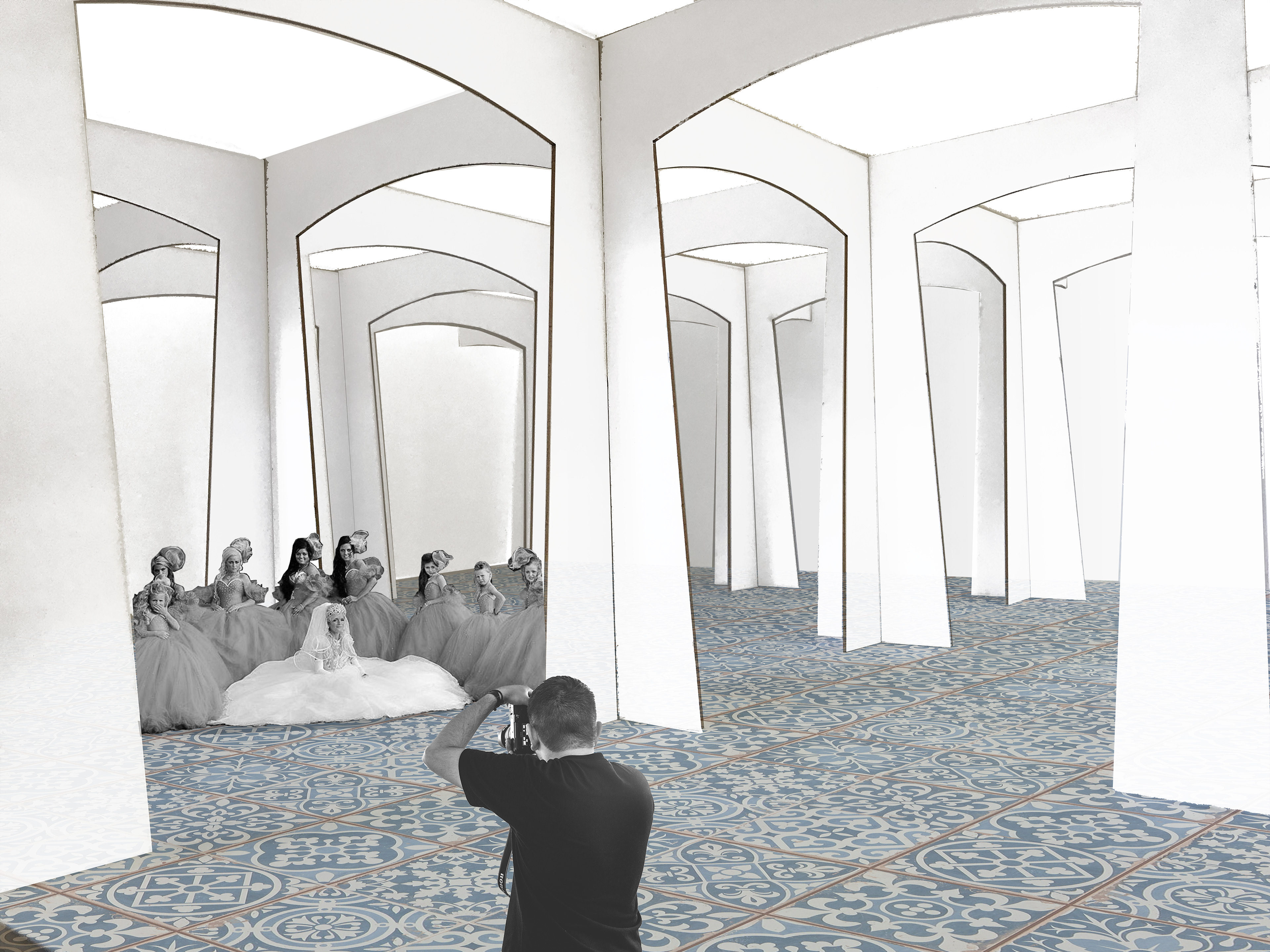
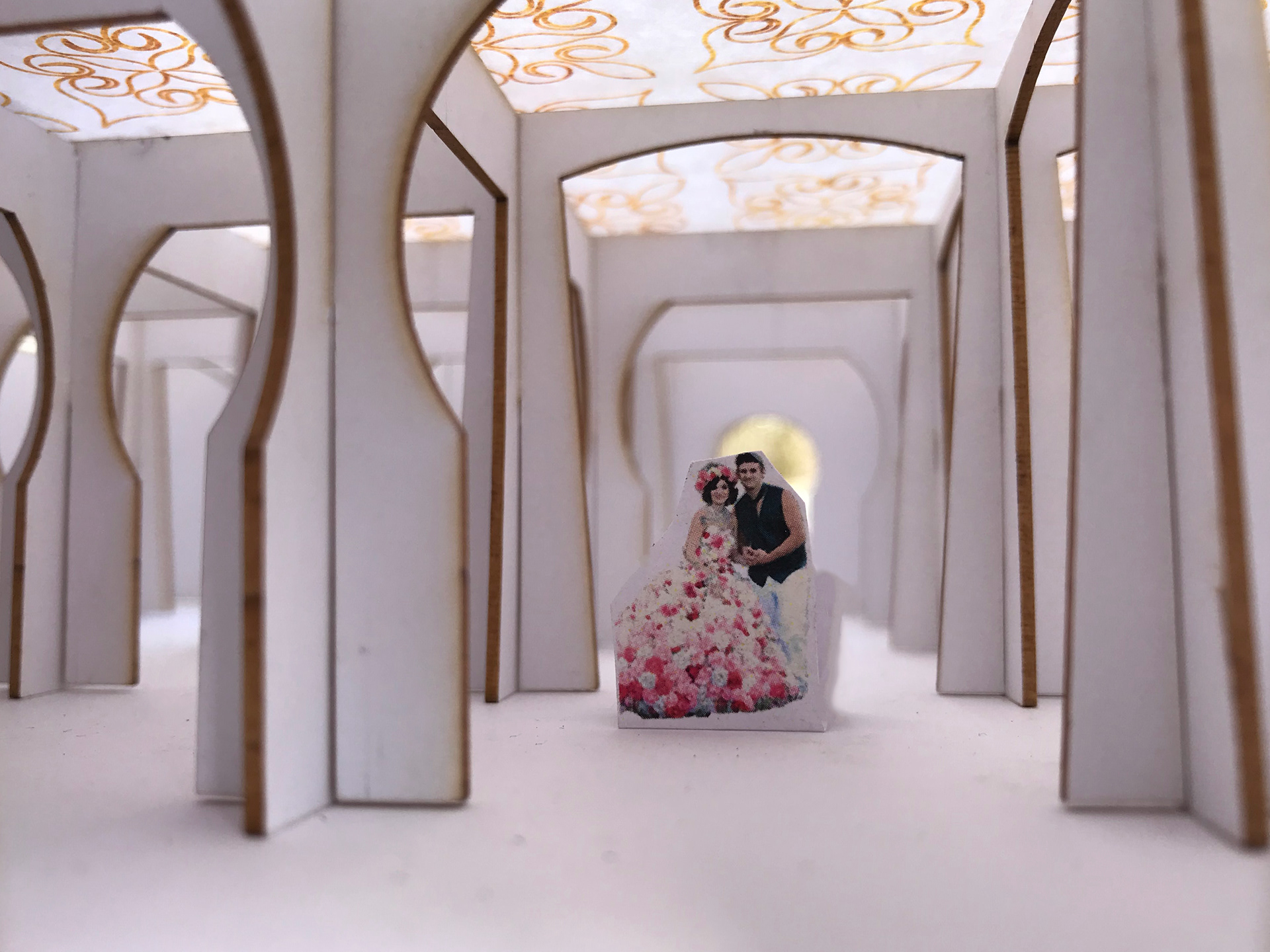
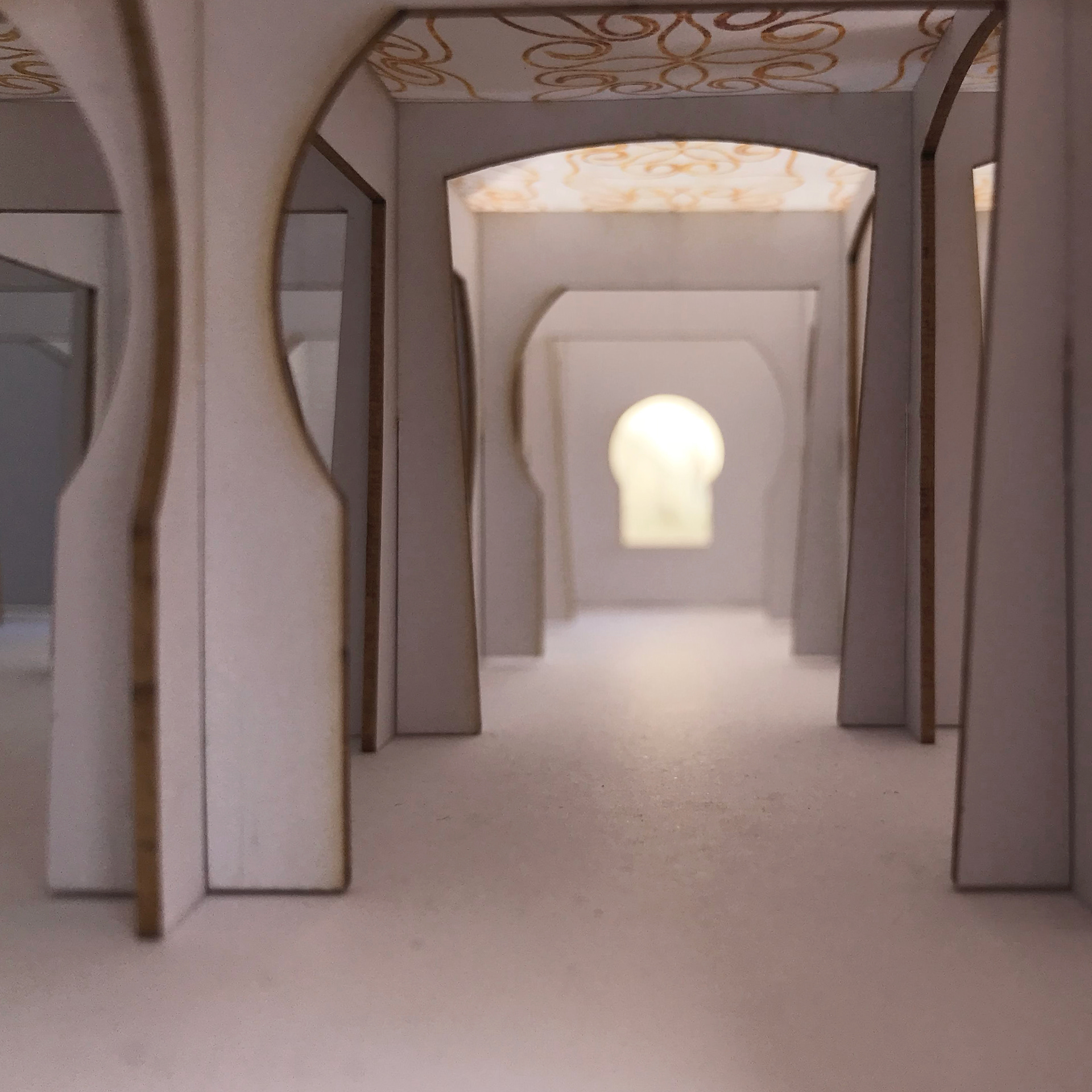
Initial physical model test collages
Facade test render

